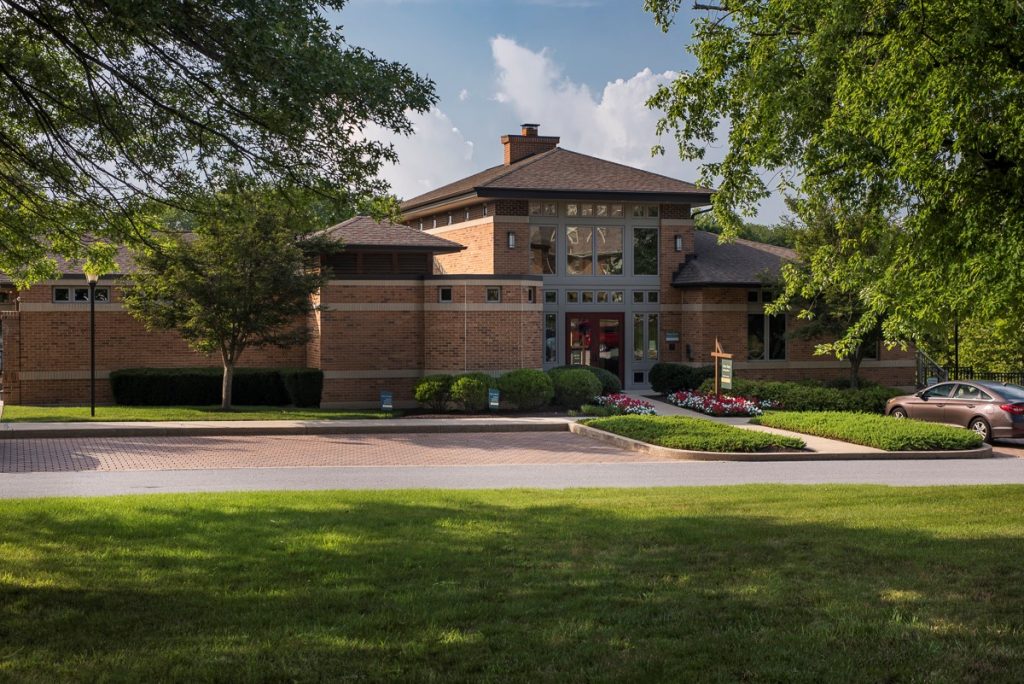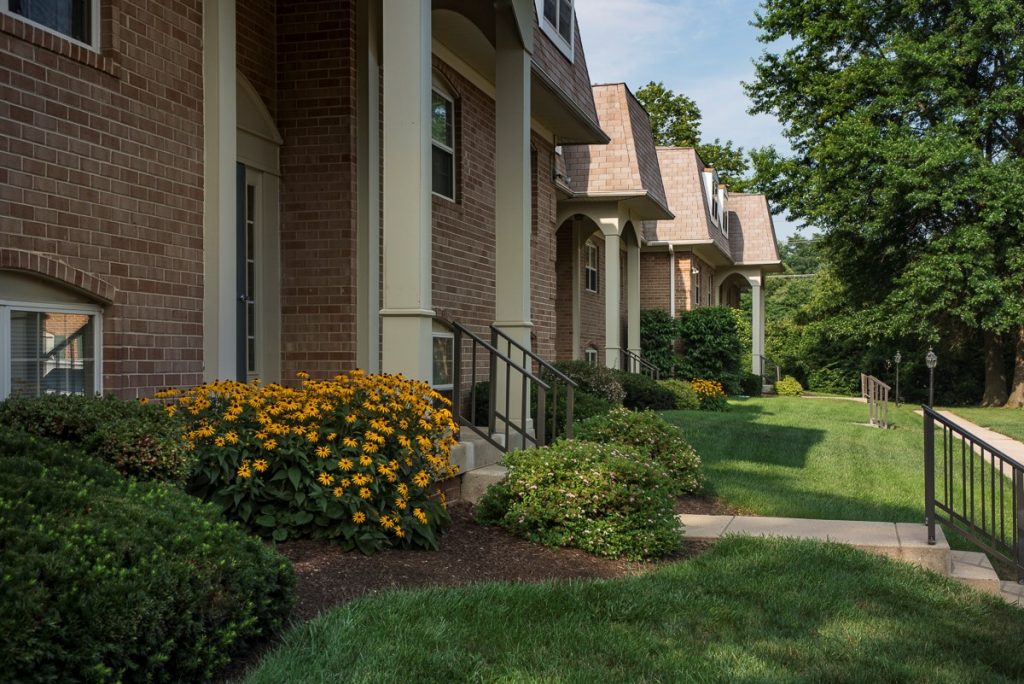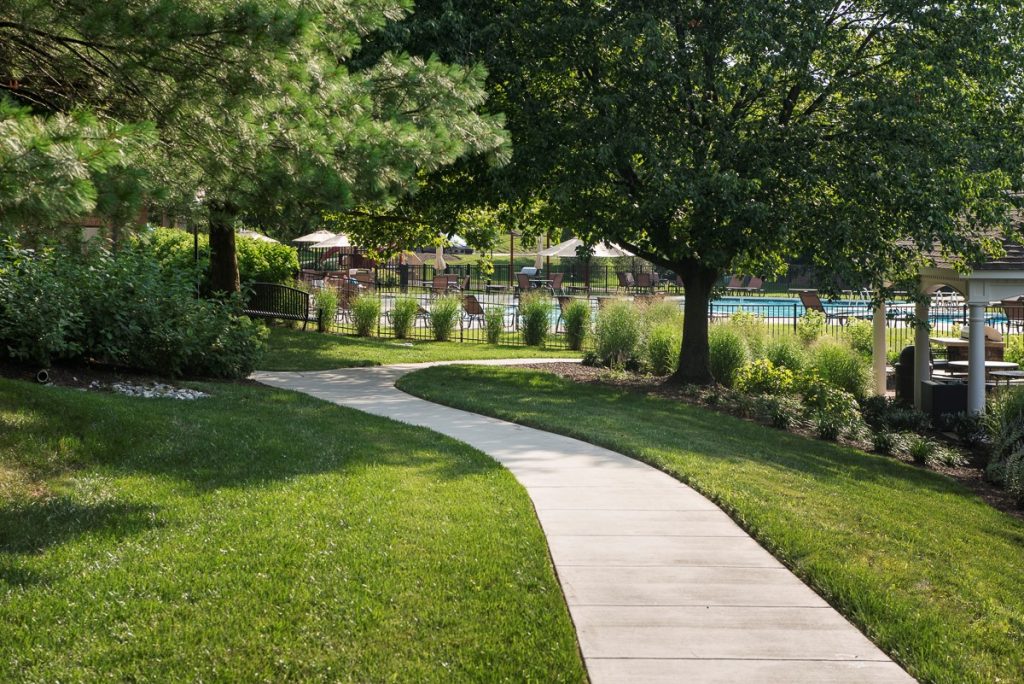8 Ways to Increase Your Retirement Community’s Landscape Safety
When running a retirement home or community, there’s one recurring concern of prospective and current resident’s families alike: how safe is it for their loved one to live here? Can they trust you to properly care for and protect your residents?
It can be easy to get caught up focusing on your safety inside, ensuring residents’ rooms and communal spaces are up-to-par. But when was the last time you considered your landscape’s safety?
If you allow residents and families to mingle outside, here at 8 ways to improve the safety around your property:

1. Brighten it Up
As elderly persons’ vision decreases with age, it can be much harder for them to see. When considering the landscape design of your retirement home, be sure that outdoors spaces where residents interact are well-lit.
While most retirement homes restrict outdoor time to daylight hours, residents mingling as the sun begins to set or being transported after hours will appreciate the added brightness. Line walkways with pathlights, illuminate communal seating areas and be sure your parking lots are nice and bright.
2. Enhance Visual Cues
Even if you brighten your landscape, elderly may still have trouble seeing certain things that the keen-of-sight take for granted. Many forgetful residents need signage to help them find entrances or to lead them to an established outdoor seating area. Beyond this, any signage in general should feature enlarged text for easy reading.
Bright colors are eye-catching, and can be used to draw attention to hazardous areas for residents. For instance, you may choose to line steps, raised spots or tripping hazards with yellow tape.
Twenty-three percent of patients in the emergency room for stair-related injuries said they slid, slipped, tripped or misstepped, according to research from this 22 year study, so anyway you can draw the eye to change in elevation is a smart idea. Garden beds or mulch features could be edged with ankle-high blocks or fencing to keep residents from stepping into landscaping as well.

3. Safeguard Water Systems
While water features can be attractive features to add to your retirement community or property, they can be quite dangerous if not properly protected. If you have a pond or lake near or on your property, we recommend adding clear signage and fencing/railing around the water. Surrounding blocks should be high enough to not fall over— at least waist high.
We also advise installing preventive blocks around foundations or other water displays like waterfalls, to deter accidental injury. Signage may indicate that grass or sidewalks around water features may be slippery too, as a helpful way to keep guests safe.
4. Keep Your Property Tidy
This should be a priority already, but we want to stress the importance of maintaining your senior living facility’s cleanliness. Leaves, fallen branches and other debris can easily become a tripping hazard for those with poor vision.
The best way to stay on top of this is to ensure your landscaper participates in routine clean-ups. We also recommend adding properly spaced out trash and recycling receptacles to prevent litter from accumulating in walking areas.
Keeping your retirement community’s property clean and tidy is also important for delighting the families of current residents and in attracting new potential residents. No one enjoys a messy or unkempt outdoor space, and if you have established seating and mingling areas outside, it’s pertinent to keep them polished.

5. Add Numerous Outdoor Seating Areas
You might wonder how adding seating can help increase the safety of your retirement communities landscape, but giving your residents multiple places to rest can be quite important. Elderly residents can tire from even short-distance walking, and if they don’t have a place to sit to restore their energy or breathing, they are more inclined to collapse or fall.
6. Regularly Inspect Walkways
Because walking paths are the highest traveled route for residents outside, these are some of the most important areas to inspect. If you are taking steps to maintain a clean property (like we mention in our point above), you shouldn’t have to worry about debris; however, other factors can lead to injury.
Any paved areas should be checked for cracks or rivets, which can serve as huge tripping hazards. If there are sections with gravel, ensure the rocks are smoothed evenly.
7. Make Accessibility Improvements
Running a retirement community, you probably already prioritize ways to accommodate your residents’ handicaps and disabilities. You may already have ramps, specialized landings and elevators to make accessing your building from the outside possible for those in wheelchairs, those using walkers or canes, etc.
But we also encourage you to consider ways you could enhance these systems, by performing annual maintenance checks, replacing outdated equipment and adding additional support bars, traction pads, etc. to increase the safety of your outdoor entrances.

8. Think Beyond Physical Security
It’s easy to laser-focus on the physical security around your retirement home’s landscaping, but don’t forget about other forms of security, such as emotional, social and intellectual wellness.
In one study, researchers found that genes accounted for only 20% of longevity. Seventy five percent of it was connected to lifestyle. How are you enhancing your residents’ perception of security both inside and out of your community? Consider enhancing and evolving your group activities, creating more communal spaces for mingling and collaborating and other ways you can improve their state of living.
We Know What Your Senior Living Landscape Needs
Our team at C. Caramanico & Sons, Inc. has worked with senior living facilities for a number of years, developing beautiful and safe landscapes for properties across Pennsylvania. Check out ways that we operate with safety in mind.
Then, request your commercial property assessment and let us recommend a few ways to increase your landscape’s safety.
